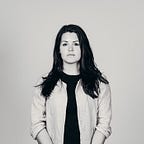Three forgotten lessons about the circular economy
This article has originally been published by Mint Magazine in December 2020 and is also available in Spanish.
Editing by Henry Leveson-Gower
I vividly remember the first time that the idea of a circular economy was brought to my attention. Professor Conny Bakker was standing in front of what was the smallest lecture room of the faculty of Industrial Design Engineering at Delft University of Technology, The Netherlands. “Waste is design gone wrong,” she told us. This was the faculty’s (probably the university’s) very first course on circular product design — offered only as a short elective to a handful of undergraduate students. The circular economy seemed to be exactly the idea I was craving for: it gave business and design a lead role in the story about a more prosperous and resilient future.
The circular economy has proven to be an inspiration to not just myself, but to many businesses that are looking at shifting their business model, as well as multilateral organisations like, for example, the European Commission working on the Green Deal. At the heart of the idea is the notion of designing out waste, restoring and regenerating natural capital and extending product lifespans. It promises to decouple economic growth from resource constraints. Pretty much all of it will be sparked up -it seems- via the…
